In this world of rapidly changing data communication, there is an increasing need for optical transceivers that work at high speed and are efficient. The Octal Small Form-factor Pluggable (OSFP) Multi-Source Agreement (MSA) is a huge step forward in the design and functionality of optical transceiver devices that meet the needs of contemporary networking systems. This piece studies the basics behind OSFP MSA; it looks into its technical specifications, benefits, and implications for future network infrastructure development while also considering how OSFPs can meet these new demands. We hope that by giving a holistic view, readers will be able to understand more about what this technology does for connectivity within optics and across different applications aimed at enhancing efficiency in the transmission of information.
What is OSFP MSA, and why is it important?
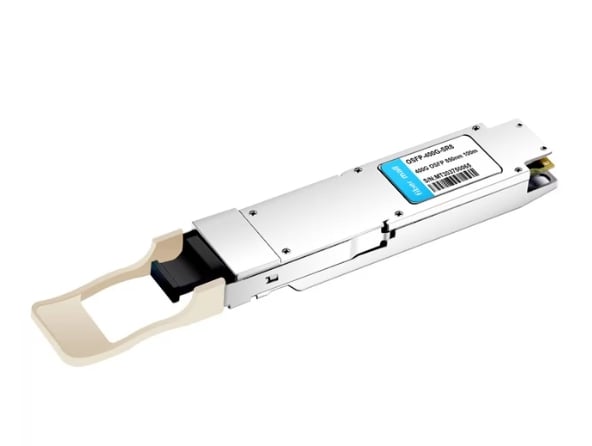
Defining OSFP and its significance
The Octal Small Form-factor Pluggable (OSFP) is a kind of optical transceiver module that supports high data rates and is designed for 400G connectivity and beyond. It can transfer data in eight 50G lanes simultaneously with a small size, so it’s more efficient. The key point of OSFP is its capability to meet the increasing bandwidth requirements in data centers and HPC environments, including supporting 100G and 200G implementations. The OSFP MSA helps save power while achieving higher speed transmissions, which gives network designers more freedom when they are planning their systems and also guarantees seamless integration into existing systems by making sure it works well with different equipment, too. This feature not only increases the efficiency of the whole system but also makes it possible for OSPF to be used together with next-generation network technologies, thus enabling OSPF to cater to future needs as well.
Overview of the Multi-Source Agreement (MSA)
The Multi-Source Agreement (MSA) is used as a standard for creating and deploying optical transceiver technologies such as OSFP. This agreement helps in speeding up innovation within the industry by bringing different manufacturers together with standard specifications and guidelines which ensures that their products can seamlessly work together if they are from different vendors. It also reduces the cost incurred during the adoption process, hence making it cheap for people to adopt new technology because they do not have to wait for long before new things appear on the market. Additionally, MSA acts as a catalyst for competitiveness among players involved in this field, leading to more efficient devices while consuming less power, considering scalability across various network applications. In short, without MSA, optical connectivity would not exist.
Benefits of OSFP over other form factors
When contrasted with other optical transceiver form factors, the OSFP (Octal Small Form-factor Pluggable) has several advantages. Firstly, it can achieve higher data rates, specifically up to 400 Gbps, which is perfect for modern data center needs and high bandwidth applications. Secondly, its small design enables more switches and routers per rack, thus increasing space efficiency, initially supporting 400G OSFP modules, too. In addition to this feature, the thermal management functions within these modules help improve reliability by effectively getting rid of excess heat produced during operation. Furthermore, it also offers the benefit of being compatible with previous protocols and interfaces, therefore making upgrades easier and enabling integration into existing network infrastructures. All these benefits point towards selecting OSFPs as the best option since they can adapt better to changing requirements for optical networks.
How does the OSFP Transceiver work?
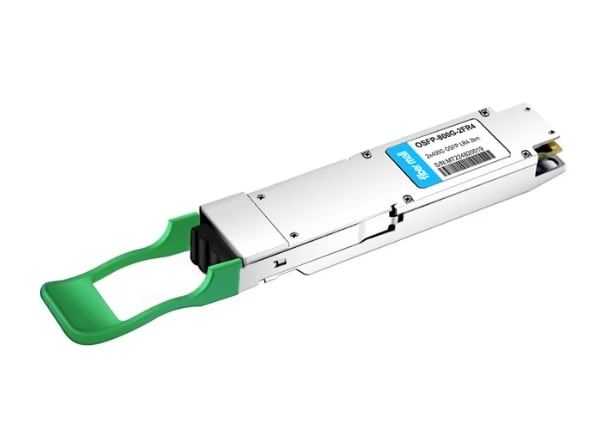
Components of an OSFP Transceiver Module
An OSFP transceiver module is composed of many parts that work together to make optical data transmission faster. These parts are as follows:
- Optical Interface: Also known as the transmitter and receiver, this usually employs laser diodes or photodiodes to convert electrical signals into light signals and vice versa. An optical waveguide in the module helps propagate light efficiently.
- Electric Interface: Electrical connectors permit the OSFP to connect with a host device, sending electrical signals through high-speed lanes. This includes differential pairs engineered to have minimum signal loss and crosstalk.
- Digital Diagnostic Monitoring (DDM): It has sensors that give temperature, voltage, and optical output power readings in real-time. This part supports system monitoring while ensuring that the transceiver operates at its best according to OSFP MSA specification.
- Casing And Heat Sink: The housing of modules serves not only structural purposes but also thermal management needs; it encloses them so heat can be drawn away from sensitive areas such as lasers or detectors towards sinks where dissipation occurs thus keeping things running smoothly.
- Microcontroller: This chip controls how these devices function by overseeing their communication with each other, diagnosing faults when necessary, and establishing contact between them and host systems.
These units work collaboratively to ensure effective functioning, speed, strength of connection and reliability for modern optic networking environments using OSFP standards.
Working principles of OSFP technologies
The OSFP (Octal Small Form-factor Pluggable) transceiver is designed with some principles which are based on advanced optical communication technologies. First, it uses a parallel transmission architecture through simultaneous data transfer over several high-speed channels to increase bandwidth capability hence suitable for data centers and high-performance computing applications.
Secondly, forward error correction (FEC) techniques in OSFP modules detect and correct errors as they occur thereby improving data integrity during transmission over long distances. It also involves digital signal processing (DSP) that optimizes performance through modulation and demodulation control of signals so as to achieve higher rates of data transfer with minimum loss in quality.
Moreover, this device has strong diagnostic features supported by DDM technology, which enable continuous monitoring of its operational environment, thus providing helpful statistics about various performance aspects of the module. Such real-time response aids in proactive maintenance practices while ensuring better functionality within networking infrastructure. These concepts make OSFP technology highly efficient, dependable, and scalable for contemporary optical networks whose compliance is mandatory.
Integration with Data Centers and existing networks
The combination of OSFP transceivers and data centers also helps them blend into the background with a high-capacity optical connection. This means that they can be easily installed in existing systems because they are designed to fit their size. On the other hand, this support for current Ethernet standards also allows higher amounts of information to be transferred through these devices. Such parallelism in transmission greatly raises the aggregated bandwidth, making it suitable for applications with large data quantities like cloud computing and big data analytics.
Another thing is that previous transceiver formats can still work when used together with OSFP modules hence allowing backward compatibility between different types of these gadgets. Hence, an organization does not necessarily have to change everything about its infrastructure when upgrading its network performance using OSFP technology. This feature makes networks more scalable as they can adapt quickly by adding or removing components depending on the need for wider channels without sacrificing the speed or reliability of connections between points on a given system or campus area network. Therefore, any center interested in enhancing service delivery should consider adopting such equipment since it will perform better as well as be compatible with established ways of doing things in this field.
What are the specifications of OSFP MSA?
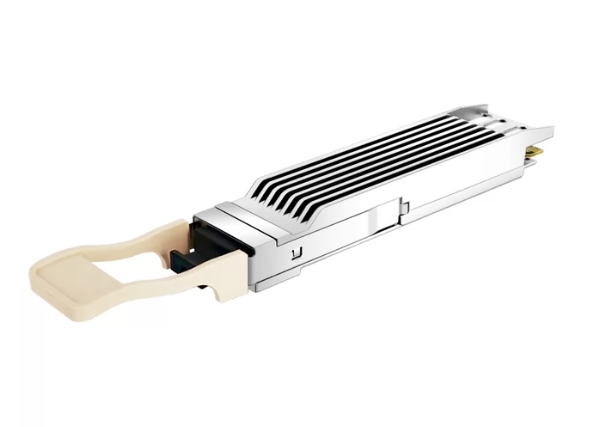
Critical attributes of OSFP MSA 4.0
The OSFP MSA 4.0 (Octal Small Form-factor Pluggable Multi-Source Agreement) brings in some important features that aim at improving the capabilities of optical networking. Firstly, it allows for data rates of up to 400 Gbps through parallel optic technology thereby facilitating high-speed data transmission required by modern applications. Secondly, it has a maximum power consumption increase of 15W, thus enabling it to work well under demanding conditions. Furthermore, modules of OSFP 4.0 have lower latency and better signal integrity; these are vital for low-latency applications such as financial trading or real-time data processing, which coincide with the goals set by OSFP MSA. Another attribute worth mentioning is the support for different types of optical interfaces like single-mode fiber or multimode fiber, hence ensuring flexibility during deployment. Finally, its design includes compliance with thermal management standards so as to enhance reliability when used under different operational environments; this further demonstrates performance consciousness, effectiveness, and operational excellence in optical networking as envisioned by OSFP MSA.
Comparing OSFP with other optical transceiver modules
Compared to other optical transceiver modules like QSFP28 and CFP2, there are several points of difference between OSFP and QSFP. Specifically, it is made for higher data rates which can reach 400 Gbps, unlike QSFP28’s 100 Gbps and CFP2’s 200 Gbps. Therefore, this makes it the best choice for next-level data centers that require wider bandwidths due to increasing data traffic volumes.
About its size, OSFP has a larger form factor than any other module of its kind and hence consumes more power – up to 15W – while having strong thermal management but only supports up to 3.5W of power consumption by QSFP28, which means that under harsher conditions where performance stability may be jeopardized if not maintained at optimum levels.; also versatility comes in where singlemode or multimode fibers can be used with this device thus giving customers flexibility when choosing what type of fiber suits their specific application best which may not always the case when using some other kinds of modules. If one wants to invest in future-proofing high-capacity networks, then speed alone cannot be enough; therefore, OSFP also provides great adaptability and power compared to its peers during such considerations.
Technical details of OSFP-XD MSA revision 1.0
The first release of the Open Standards for Flexible Plugable (OSFP-XD MSA) revision 1.0 introduces some key changes that will help increase the efficiency and adaptability of optical transceiver modules. For example, this version now allows more fibers to be connected—up to sixteen per module—while maintaining a data rate of four hundred gigabits per second.
One major improvement is the addition of an advanced electric interface, which improves signal integrity and thermal performance, thus addressing challenges within data centre environments. This improved electric interface also supports different modulation formats, thereby making it compatible with emerging high-speed optical networks.
Secondly, the new OSFP-XD module has inherited excellent heat dissipation capability from its predecessor, hence dissipating power as high as twenty watts necessary for maintaining performance during tough operational conditions. Organizations that have invested in future-proof optical networking solutions can smoothly migrate from current OSFP systems to OSFP-XDs while still using their old infrastructure without any hitches.
What are the typical use cases for OSFP?
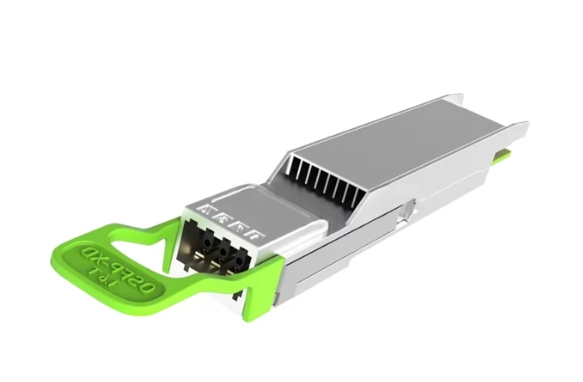
Application in Data Centers
Considering its high capacity and efficiency, the OSFP technology is very useful in data center applications that support 400G OSFP and 200G configurations. Data centers necessitate strong solutions for dealing with massive amounts of data traffic, making bandwidth availability higher by supporting 400 gigabits per second (Gbps) data rates, which is a big leap for OSFP. This creates efficiency in processing information, especially when it comes to cloud computing, among other bandwidth-intensive tasks like content delivery or real-time analytics, since they can now be done faster than before. Additionally, this feature enables easy upgrading without necessarily changing everything because of its modular design which allows scalability within architectures.
Moreover, the ability of OSFP-XD to manage thermal energy dissipation (upwards of 20W) better ensures favorable working conditions are maintained in densely populated areas where lots of servers are packed together, such as those found in most data centers. Furthermore, enhanced signal integrity, together with an advanced physical layer, also contributes towards reducing errors and lowering latency; hence, they become perfect matches for systems demanding high-reliability standards. In general terms, the adoption of this particular type of technology within our centers will not just improve what we can do now but also prepare us adequately for future needs in terms of infrastructure development itself.
Adoption in 400G and 800G networks
The transition to 400G and 800G networks requires OSFP (Octal Small Form-factor Pluggable) technology, which enables service providers to meet the rapidly growing demand for higher bandwidth in telecommunications. As faster networks are adopted by businesses and organizations, OSFP allows them to deploy high-density solutions by incorporating multiple 400G interfaces into a single module. This saves space and simplifies network architecture, thereby improving efficiency.
Additionally, at these speeds, power saving with OSFP becomes vital since it consumes less power than other modules while still delivering good performance across such high-speed connections through enhanced thermal management capabilities that reduce operational costs greatly. For future-proofing reasons as well as ensuring scalability of infrastructure towards next-generation optical interconnects, OSFP should support 800G technologies too, thus making them ready for any developments that may arise later on. In short words, Using OSFP technology within their 400GE and 800GE network deployments allows enterprises to achieve higher performance levels together with greater operational flexibility while following the recommendation of the MSA (Multi-Source Agreement).
The role of TAA in OSFP deployment
The Trade Agreements Act (TAA) has a vital role in OSFP technology deployment, which mainly focuses on checking obedience and encouraging usage of home products in federal purchases. TAA requires all items procured through government contracts to be made either within the United States or specific countries listed by the law that are compliant with set standards. This rule determines what types of OSFP components and modules are chosen because manufacturers have to get their materials as well as production methods from areas that meet government requirements.
Moreover, in addition to fostering stronger supply chains for OSFP technologies across America, it has compelling organizations to improve their manufacturing capacities and drive invention. More so, establishments that wish to install OSFPs on projects related to governments should ensure that apart from meeting performance specifications, they are also TAA compliant, thereby reducing chances of procurement challenges while enhancing reliability levels of network infrastructures. Therefore, businesses can contribute towards domestic economic growth but still maintain necessary technological competitiveness for higher speeds in networks if only they give priority to TAA vendors.
How does OSFP Pluggable ensure compatibility?

OSFP module interconnects
OSFP (Octal Small Form-factor Pluggable) modules are designed to create a common communications foundation among various networking environments. The key to their compatibility is having standard interfaces based on IEEE 802.3 standards. These modules usually have strong electrical interfaces that support high-speed data transmission; this makes different networking hardware communicate without any hitches.
Moreover, OSFP modules have specific keying designs and pin configurations, which prevent misalignment during installation, thus guaranteeing connections’ reliability. Using standardized cables like those for optical communication with multiple wavelengths support means that OSFP modules can work in different use cases and network architectures. This not only simplifies integration processes for network operators but also ensures vendor neutrality; therefore, operators have the freedom to choose from many hardware solutions provided by different vendors while still maintaining network performance and integrity at large.
Compatibility with existing infrastructure
According to the most recent publications, OSFP modules can work with traditional SFP and QSFP designs without any problems. This means that there is no need for organizations to change their entire networks when they want to upgrade. All this flexibility is thanks to the electrical and optical specifications of OSFP being universal; hence, existing connections will still function even when new ones are put in place. In addition, OSFP has a modular architecture that makes it possible for network administrators to increase capacity without affecting the performance of their current systems. The outcome is an easier switch over to high-speed networking features while ensuring that there are few interruptions and maximum utilization of resources takes place.
Ensuring MSA-compliant implementations
To make sure implementations are compliant with MSA, adhere to the design parameters and performance requirements indicated by the Multi-Source Agreement specifications for OSFP modules. This means that one has to follow certain rules; one should use an appropriate pin layout, electrical interface standardization, and optical characteristic consistency, as stated in the MSA documentation. Additionally, it is important to test strictly against these standards so as to verify interoperability between different vendor’s products. There are two benefits of this meticulous conformity: compatibility is guaranteed, and a healthy environment is created where devices from many manufacturers can work together seamlessly on the same network infrastructure. Organizations should place more emphasis on MSA compliance because it helps them avoid being tied down by specific suppliers while also prolonging their networking investments’ life spans at maximum levels of risk mitigation.
Frequently Asked Questions about OSFP MSA
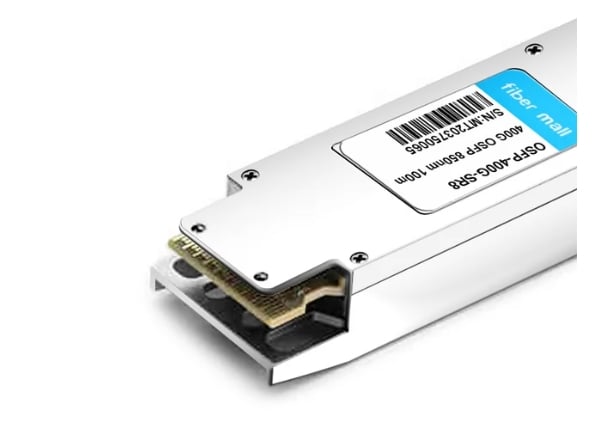
What is OSFP MSA?
The OSFP MSA or Multi-Source Agreement in Octal Small Form-factor Pluggable is a system of rules that describes how to build, use, and maintain OSFP optical modules. It is designed to make sure that devices made by different companies can work together and be connected or used with any other type of product. This allows for flexibility within and across networks while making it easier for new high-speed data transmission technologies to be adopted or implemented.
Is OSFP MSA compliant with existing standards?
Indeed, the OSFP MSA adheres to all current requirements, including those established by IEEE and ITU. This means that it is compatible with relevant electrical and optical specifications to ensure that various network devices can work together without any issues. By doing this, it promotes extensive use of up-to-date network infrastructures in different parts of the world.
What are the benefits of OSFP Pluggable modules?
Pluggable modules, also known as OSFP, have many advantages. They come in small sizes, providing large amounts of ports per device, thereby increasing the network capacity. This makes them suitable for supporting higher bandwidths required by modern data centers. The ease with which they can be deployed or upgraded makes it possible for systems administrators to make their configurations promptly without bringing their networks down for long hours. Besides this, they are designed with different speeds and reach capabilities that give more options when designing diverse network applications. Additionally, the hot-swappable feature helps reduce operational expenses by allowing quick replacements during maintenance, thus minimizing downtime and maximizing efficiency.
Reference Sources
Small form factor (desktop and motherboard)
Frequently Asked Questions (FAQs)
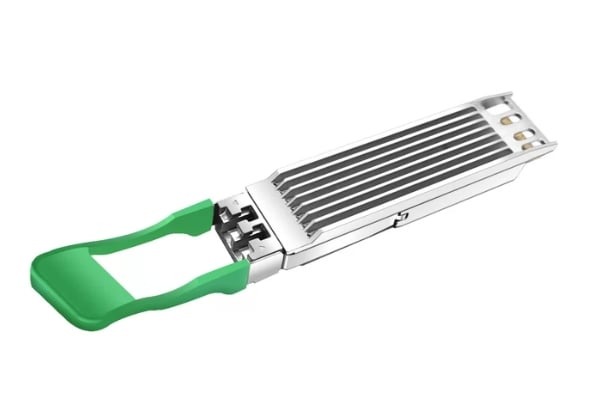
Q: What is the OSFP MSA, and how does it differ from other optical transceiver standards?
A: OSFP MSA (Octal Small Form Factor Pluggable Multi-Source Agreement), a specification for developing 800 Gbps capable high-density, high-speed pluggable optical transceivers, differs from other such standards mostly in size. QSFP is narrower and shallower than OSFP, which gives the latter better thermal performance and increased port density.
Q: What advantages do OSFP ports bring to a 1U front panel?
A: An OSFP configuration’s 32 ports per 1U front panel can deliver very dense packaging and superior thermal management. While still supporting 32 OSFP ports in 1U configurations, this allows for higher data throughput within the limited space typical for data centers.
Q: How does it achieve better heat dissipation?
A: It achieves better heat dissipation by being designed wider and deeper than its immediate predecessor – the QFSP form factor. Therefore, there is more room for airflow through itself when used together with other components like fans or heat sinks; also, it can dissipate more watts due to the larger area exposed for radiation purposes, making efficient cooling possible, especially necessary during operation at speeds close or equal to four hundred gigabits per second where the heat produced may be significant even exceeding two times greater amounts compared with slower connections.
Q: What cable assemblies can work with OSFP?
A: Different types of cable assemblies, including active optical cables as well as fiber optic solutions, are compatible with this technology, so one does not need any particular kind but should choose what suits best his needs depending on the distance between devices he wants to connect using them because some may have limits regarding maximum supported lengths while others do not care about such issues at all but were explicitly made long-range applications always ensuring that data goes through them fast enough without losing too much energy or getting distorted too badly due attenuation caused by various factors.
Q: What makes it good for future-proofing data center networks?
A: OSFP is good for future-proofing data center networks because of its high-speed capability (up to 800 Gbps), a large number of ports that can be accommodated within limited space, excellent heat dissipation properties, which ensure efficient performance even under heavy loads generated by devices operating at maximum capacity and compliance with existing MSA/TAA standards as well being designed taking into account changes in bandwidth requirements over time.
Q: Who is involved in making OSFP products?
A: Some big technology companies and manufacturers that provide OSFP cages and other necessary components are involved in developing and adopting OSFP products. These organizations also contribute to the ongoing evolution and standardization of the OSFP form factor.
Q: Can it support non-pluggable optical transceivers?
A: No, it doesn’t. The only thing an optical module with this form factor can do is integrate with a pluggable one. Nevertheless, an average device based on this type of transceiver supports a wide range of pluggables, which makes it flexible for use within different network architectures or upgrading paths, including compliance with existing standards for pluggable optic modules.
Q: How does OSFP ensure signal integrity at high-speed data transmission?
A: Its strong design ensures signal integrity while inheriting better thermal management from QSFP-DDs. These two additional features help minimize disturbances leading to low-quality output representing 400Gbps or even 800 Gbps rates being transmitted as received.
Q: What is OSFP-XD specification? What does it do to enhance the capabilities of OSFP?
A: Specifications of OSDP (Extra Dense) were developed not only for increasing its capacity but also supporting higher data rates like 8×50 Gigabit configurations per second, thus maintaining compatibility with current ports per 1U front panel but paving the way toward future enhanced solutions such as those involving speeds upto 800gbps.
Related Products:
-
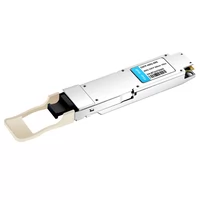 OSFP-400G-SR8 400G SR8 OSFP PAM4 850nm MTP/MPO-16 100m OM3 MMF FEC Optical Transceiver Module
$480.00
OSFP-400G-SR8 400G SR8 OSFP PAM4 850nm MTP/MPO-16 100m OM3 MMF FEC Optical Transceiver Module
$480.00
-
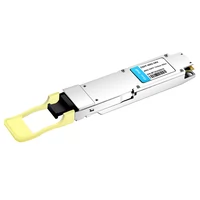 OSFP-400G-DR4 400G OSFP DR4 PAM4 1310nm MTP/MPO-12 500m SMF FEC Optical Transceiver Module
$900.00
OSFP-400G-DR4 400G OSFP DR4 PAM4 1310nm MTP/MPO-12 500m SMF FEC Optical Transceiver Module
$900.00
-
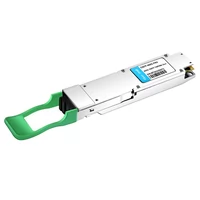 OSFP-400G-FR4 400G FR4 OSFP PAM4 CWDM4 2km LC SMF FEC Optical Transceiver Module
$900.00
OSFP-400G-FR4 400G FR4 OSFP PAM4 CWDM4 2km LC SMF FEC Optical Transceiver Module
$900.00
-
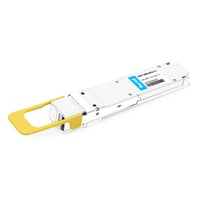 OSFP-400G-DR4-FLT 400G OSFP DR4 Flat Top PAM4 1310nm MTP/MPO-12 500m SMF FEC Optical Transceiver Module
$800.00
OSFP-400G-DR4-FLT 400G OSFP DR4 Flat Top PAM4 1310nm MTP/MPO-12 500m SMF FEC Optical Transceiver Module
$800.00
-
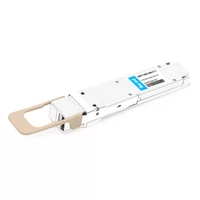 OSFP-400G-SR4-FLT 400G OSFP SR4 Flat Top PAM4 850nm 30m on OM3/50m on OM4 MTP/MPO-12 Multimode FEC Optical Transceiver Module
$650.00
OSFP-400G-SR4-FLT 400G OSFP SR4 Flat Top PAM4 850nm 30m on OM3/50m on OM4 MTP/MPO-12 Multimode FEC Optical Transceiver Module
$650.00
-
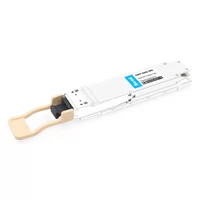 OSFP-800G-SR8 OSFP 8x100G SR8 PAM4 850nm MTP/MPO-16 100m OM4 MMF FEC Optical Transceiver Module
$750.00
OSFP-800G-SR8 OSFP 8x100G SR8 PAM4 850nm MTP/MPO-16 100m OM4 MMF FEC Optical Transceiver Module
$750.00
-
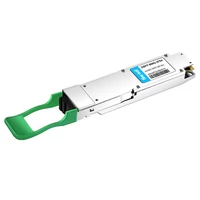 OSFP-800G-2FR4 OSFP 2x400G FR4 PAM4 CWDM4 2km DOM Dual CS SMF Optical Transceiver Module
$3500.00
OSFP-800G-2FR4 OSFP 2x400G FR4 PAM4 CWDM4 2km DOM Dual CS SMF Optical Transceiver Module
$3500.00
-
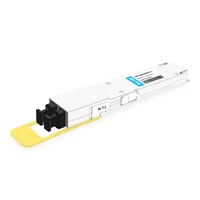 OSFP-800G-DR8D-FLT 800G-DR8 OSFP Flat Top PAM4 1310nm 500m DOM Dual MTP/MPO-12 SMF Optical Transceiver Module
$1200.00
OSFP-800G-DR8D-FLT 800G-DR8 OSFP Flat Top PAM4 1310nm 500m DOM Dual MTP/MPO-12 SMF Optical Transceiver Module
$1200.00
-
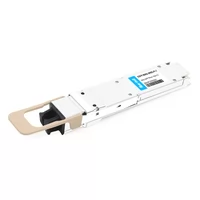 OSFP-800G-SR8D-FLT OSFP 8x100G SR8 Flat Top PAM4 850nm 100m DOM Dual MPO-12 MMF Optical Transceiver Module
$850.00
OSFP-800G-SR8D-FLT OSFP 8x100G SR8 Flat Top PAM4 850nm 100m DOM Dual MPO-12 MMF Optical Transceiver Module
$850.00
-
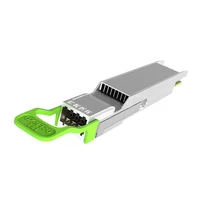 OSFP-XD-1.6T-4FR2 1.6T OSFP-XD 4xFR2 PAM4 1291/1311nm 2km SN SMF Optical Transceiver Module
$17000.00
OSFP-XD-1.6T-4FR2 1.6T OSFP-XD 4xFR2 PAM4 1291/1311nm 2km SN SMF Optical Transceiver Module
$17000.00
-
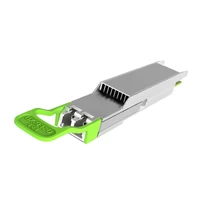 OSFP-XD-1.6T-2FR4 1.6T OSFP-XD 2xFR4 PAM4 2x CWDM4 TBD Dual Duplex LC SMF Optical Transceiver Module
$22400.00
OSFP-XD-1.6T-2FR4 1.6T OSFP-XD 2xFR4 PAM4 2x CWDM4 TBD Dual Duplex LC SMF Optical Transceiver Module
$22400.00
-
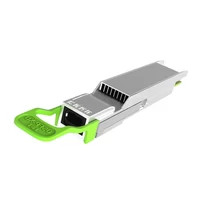 OSFP-XD-1.6T-DR8 1.6T OSFP-XD DR8 PAM4 1311nm 2km MPO-16 SMF Optical Transceiver Module
$12600.00
OSFP-XD-1.6T-DR8 1.6T OSFP-XD DR8 PAM4 1311nm 2km MPO-16 SMF Optical Transceiver Module
$12600.00
